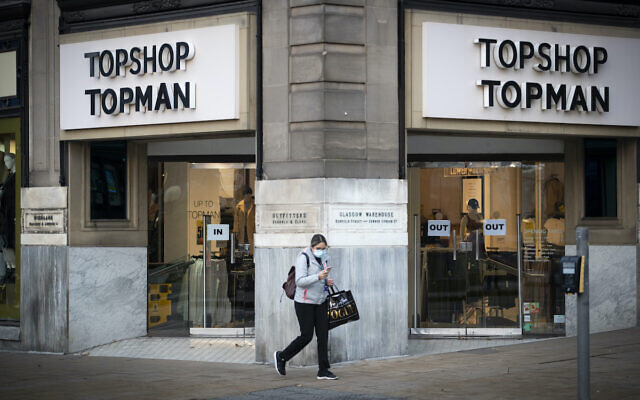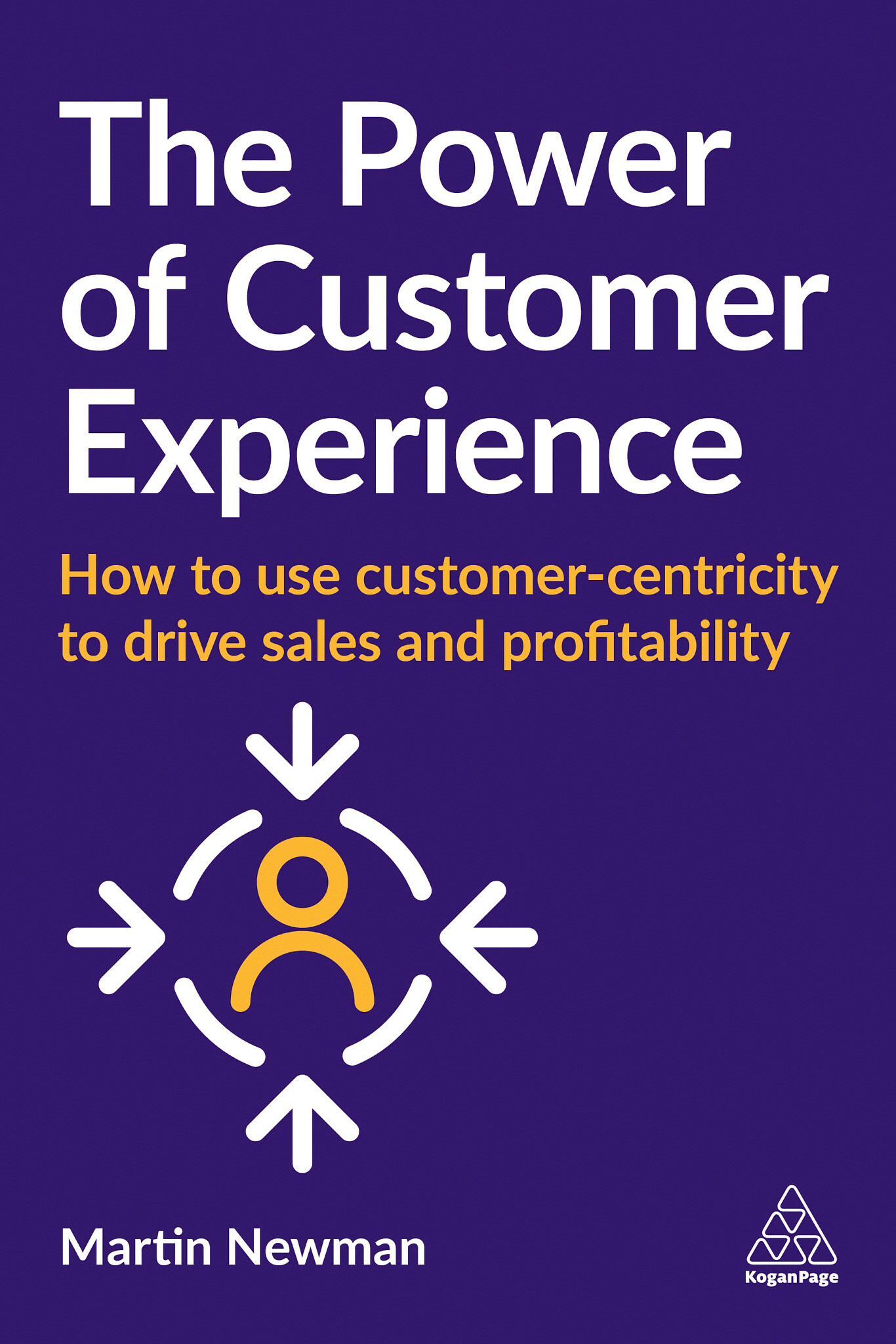Why it’s boom time for customer-centric brands
Since the internet, the balance of power has shifted from the brand to customers, who now consider wider factors when choosing where to spend money, says retail expert Martin Newman
Retail has undergone the most seismic of changes in recent years, most notably the shift in the balance of power from brand to customer, driven by the internet and increased proliferation of choice.
Consumer champion and retail expert Martin Newman is a strong believer that brands and retailers must be truly customer-centric to be commercially successful. In his new book, The Power of Customer Experience, Newman, who has worked with major brands including Harrods, Burberry and Ted Baker, has come up with a framework that any business can leverage to transform to do just that. He tells Candice Krieger what it means to be truly customer-centric, why no brand is too big to fail, and what retail will look like this time next year.
Q. Has the past year accelerated the power shift from brand to customer, demonstrating that customer-centricity is key?
Get The Jewish News Daily Edition by email and never miss our top stories Free Sign Up
A. Yes. Pre-internet, it used to be all about location, location, location. The consumer had limited choice, meaning the brand/retailer was in control. However, the internet changed everything as it democratised retail and created the proliferation of choice that consumers have today. And during the pandemic, with non-essential retail stores closed, this can be evidenced by the seismic growth in online sales as well as the birth of new online-only businesses. Retailers that successfully pivoted and leveraged their stores as fulfilment centres for click & collect/kerbside pick-up have managed to maintain market share and proven that convenience
is key.
Before 1994 and the birth of ecommerce, many retailers could get away with not being truly customer-centric. These days, there is nowhere to hide. You have to sell products customers want to buy. But you also have to empower them to engage with you as and when they see fit. If you don’t, someone else will.

Q. What is the value of customer-centricity for businesses?
A. Many consumer-facing businesses are still stuck in the pre-internet days in that they haven’t truly understood what it is that drives different types of customer to come back to them time and again. You must always be thinking about ‘how can I maximise the lifetime value of a customer to my business?’ and ‘What is it that I need to do to convince them to continue buying from us for the foreseeable future?’ Too many businesses only invest in the ‘top of the funnel’, ie; bringing new customers in rather than retaining existing ones.
Q. How can brands be truly customer-centric?
A. You need to do the following: Look after your own people first and they’ll look after your customers. You need to understand who your customers are and how best to leverage technology, your channels and services to empower your customers. The better you understand your customers, the better chance you have of ensuring you have the right mix of products and services they seek. Your response to sustainability, social responsibility and purpose are also hugely important. And consumers
can see through brands that attempt to greenwash or purpose wash, aka, make out they are when they’re not.
Q. Which brands have got it right?
A.
- Patagonia
- AO.com
- Hotel Chocolat
- Home Depot (North America)
- Tesla
- JD Sports
Q. Were you surprised by some of the casualties of the past year, such as Debenhams and Sir Philip Green’s Arcadia?

A. Not really. In most cases, these businesses were dying a death from a thousand cuts over a prolonged period of time. They all had their own unique issues; however, there were also some common challenges. They were too slow to rationalise their store portfolios. Too many retailers over-expanded their footprint as more and more consumers were buying online. Often, there has been an underinvestment in digital and therefore the online opportunity wasn’t maximised. They came under huge pressure from innovators, internet pureplays and other faster moving multichannel brands that had far shorter/quicker supply chains, being able to constantly keep their range and offer fresh and relevant. No brand is ever too big to fail. Most people forget that Apple nearly went out of business in the 1990s. Do you remember Blockbuster…?
Q. How can retailers that are struggling turn things around?
A.
- Get closer to your customers and, in particular, lapsed customers. Where you can, call them up. Why don’t they buy from you any more? You’ll learn quite quickly where you’ve gone wrong.
- Make sure you’ve got a range of products people want to buy.
- Make sure you have the channels and touchpoints your customers are looking to engage and buy through. Don’t forget that might now include Amazon as well as social commerce opportunities on Instagram or Facebook.
- Make sure you create a culture in your own business of being ‘customer-obsessed’.
- And if you want your staff to do the best they can for you and for your customers, create an environment in which they can thrive.
Q. What do retailers need to do to thrive in the post-pandemic world?
A. Sustainability, social responsibility, diversity and inclusion are hugely important to consumers. Increasingly, they’ll vote with their feet, or their mouse, if a brand is not displaying the values and behaviour they expect.
Q. How do you see the rest of the year and beyond playing out for retail?

A. Revenge consumption will be the driver for many. But not for the sake of it. Categories that relate to going out and going to events will do well. So, for example, formal wear and high fashion. Also holiday-related categories. Albeit the majority of consumers will staycation in 2021 and vacation (abroad) in 2022 when all the restrictions are gone. However, I do believe consumers in general will buy less ‘stuff’ moving forward and that, in the near-term, retailers will also need to sell ‘preloved’ and ‘upcycled’ products and have the option to rent instead of buy. This will fulfil the requirement to consume more consciously and help the environment and minimise carbon footprint.
Q. What will retail look like this time next year?
A. Buoyant. There will be a rise in independent retail. And there is still a place for good national retail chains with a smaller portfolio of stores and a really good online experience.
About Martin Newman
Martin Newman has more than 35 years’ experience in marketing, digital, CEO and chairman roles working with major brands including Harrods, Burberry, Pentland Brands and Intersport. He is the founder of The Customer First Group and chairman and board advisor to a host of well-known brands. A renowned thought leader, he has been named by Retail Week as one of the 50 most powerful people in online retail for 5 consecutive years. He is the author of 100 Practical Ways to Improve Customer Experience and The Power of Customer Experience (Kogan Page).

Thank you for helping to make Jewish News the leading source of news and opinion for the UK Jewish community. Today we're asking for your invaluable help to continue putting our community first in everything we do.
For as little as £5 a month you can help sustain the vital work we do in celebrating and standing up for Jewish life in Britain.
Jewish News holds our community together and keeps us connected. Like a synagogue, it’s where people turn to feel part of something bigger. It also proudly shows the rest of Britain the vibrancy and rich culture of modern Jewish life.
You can make a quick and easy one-off or monthly contribution of £5, £10, £20 or any other sum you’re comfortable with.
100% of your donation will help us continue celebrating our community, in all its dynamic diversity...
Engaging
Being a community platform means so much more than producing a newspaper and website. One of our proudest roles is media partnering with our invaluable charities to amplify the outstanding work they do to help us all.
Celebrating
There’s no shortage of oys in the world but Jewish News takes every opportunity to celebrate the joys too, through projects like Night of Heroes, 40 Under 40 and other compelling countdowns that make the community kvell with pride.
Pioneering
In the first collaboration between media outlets from different faiths, Jewish News worked with British Muslim TV and Church Times to produce a list of young activists leading the way on interfaith understanding.
Campaigning
Royal Mail issued a stamp honouring Holocaust hero Sir Nicholas Winton after a Jewish News campaign attracted more than 100,000 backers. Jewish Newsalso produces special editions of the paper highlighting pressing issues including mental health and Holocaust remembrance.
Easy access
In an age when news is readily accessible, Jewish News provides high-quality content free online and offline, removing any financial barriers to connecting people.
Voice of our community to wider society
The Jewish News team regularly appears on TV, radio and on the pages of the national press to comment on stories about the Jewish community. Easy access to the paper on the streets of London also means Jewish News provides an invaluable window into the community for the country at large.
We hope you agree all this is worth preserving.
-
By Brigit Grant
-
By Laurent Vaughan - Senior Associate (Bishop & Sewell Solicitors)
-
By Laurent Vaughan - Senior Associate (Bishop & Sewell Solicitors)
-
By Laurent Vaughan - Senior Associate (Bishop & Sewell Solicitors)
-
By Laurent Vaughan - Senior Associate (Bishop & Sewell Solicitors)






















